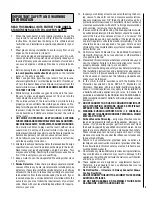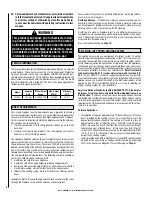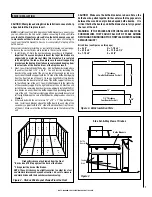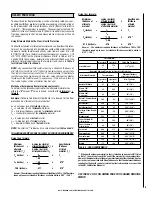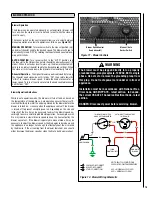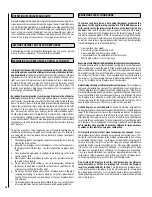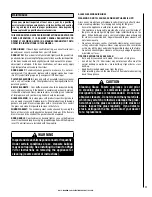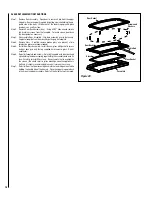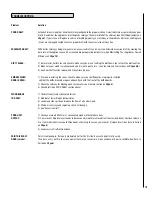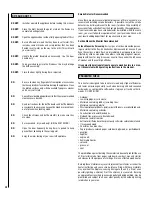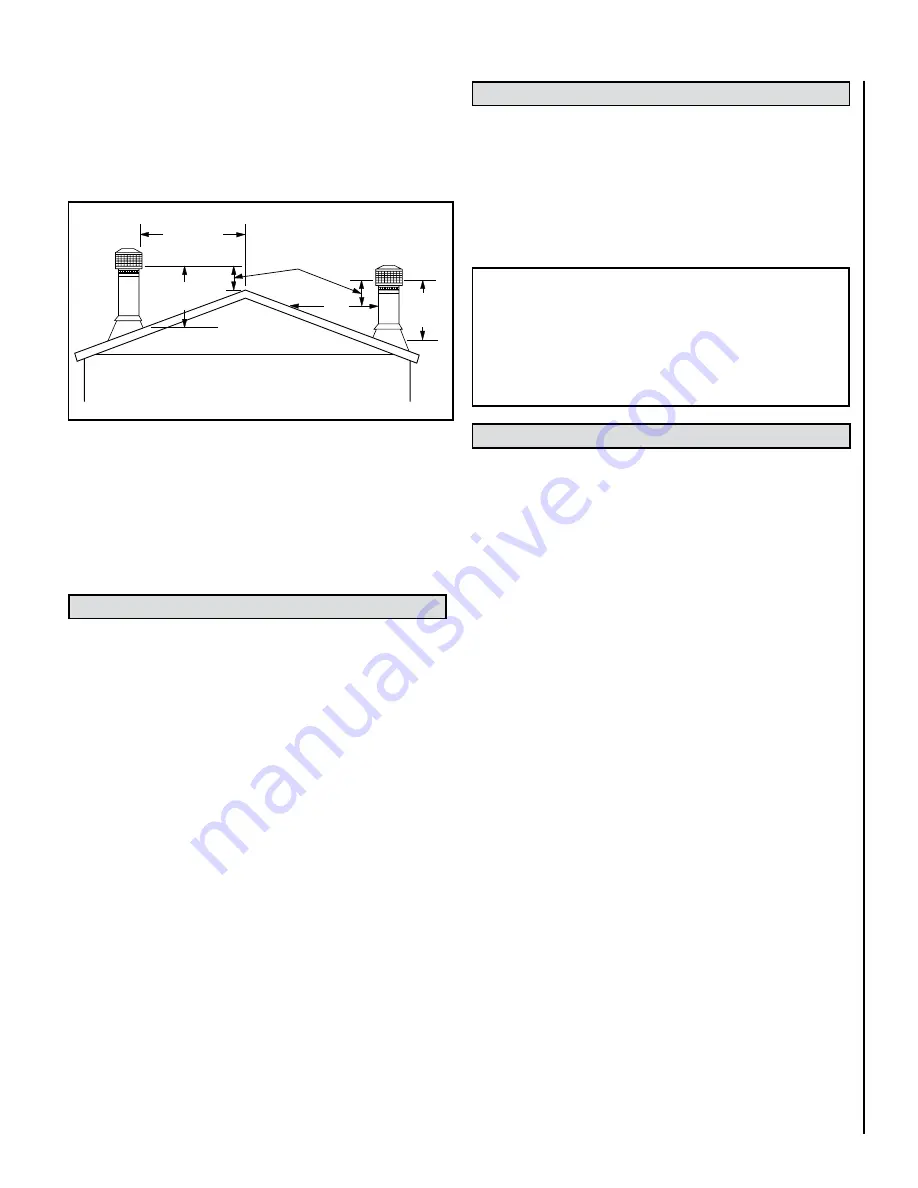
5
NOTE: DIAGRAMS & ILLUSTRATIONS ARE NOT TO SCALE.
This appliance is not designed to be operated in a negative pressure.
In very airtight homes with large kitchen exhaust fans, furnace cold air
returns, fresh air exchange systems and any other air system in close
proximity to the heating appliance may create a negative pressure in the
same room as the heating appliance. This can create dangerous back
drafting of the fireplace insert and chimney joints, drawing combustion
by-products into the home. Be sure your home has adequate makeup air
to eliminate negative pressures caused by the above-mentioned sources.
IHP accepts no liability for damages resulting from negative pressures
described above.
Ventilation Requirements - Provide adequate air for combustion. The
fresh air requirements of this appliance must be met within the space
where it will be installed. Ventilation is essential when using a Solid-Fuel-
Burning heater. In well insulated and weather tight homes, it may be
difficult to establish a good draft up the chimney (caused by a shortage
of air in the home). The lack of air is caused by many common household
appliances which exhaust air from the home (such as a furnace, heat
pump, air conditioner, clothes dryer, exhaust fans, fireplaces, and other
fuel burning appliances). Also, the combustion process of this heater
uses oxygen from inside the dwelling. If the available fresh air delivery
in the dwelling is insufficient to support the demands of these appliances,
problems can result (i.e. excessive negative pressure can develop in the
dwelling which will affect the rate at which this appliance can draft thus
resulting in performance problems. To correct this problem it may help
to open a window (preferably on the windward side of the house).
Whenever ashes get 3 to 4 inches deep in your firebox, and when the
fire has burned down and cooled, remove excess ashes. Leave an ash
bed approximately 1 inch deep on the firebox bottom to help maintain
a hot charcoal bed.
Ashes should be scooped out of a cool stove or fireplace insert with a
small metal shovel. Ashes should be placed in a steel container with a
tight fitting lid and moved outdoors immediately. Other waste shall not be
placed in this container. The closed container of ashes should be placed on
a non-combustible floor or on the ground, well away from all combustible
materials, pending final disposal. If the ashes are disposed of by burial in
soil or otherwise locally dispersed, they should be retained in the closed
container until all the cinders have thoroughly cooled. Ashes can ignite
up to 72 hours after removal from the fireplace insert.
When wood is burned slowly, it produces tar and other organic vapors,
which combine with expelled moisture to form creosote. The creosote
vapors condense in the relatively cool chimney flue of a slow-burning
fire. As a result, creosote residue accumulates on the flue lining. When
ignited, this creosote makes an extremely hot fire. The chimney and
chimney connector should be inspected at least once monthly during
the heating season to determine if a creosote buildup has occurred. If
creosote has accumulated (1/8” [3mm] or more), it should be removed
to reduce the risk of a chimney fire.
NEGATIVE PRESSURE WARNING
CREOSOTE, FORMATION AND NEED FOR REMOVAL
DISPOSAL OF ASHES
To pass inspection in nearly any jurisdiction, the chimney must meet both
safety and exhaust flow requirements. The (3’ by) 2’ by 10’ rule applies
to both masonry and factory-built chimneys.
* Ref. USA - National Standard, NFPA 211-latest edition and Canada
National Standard CSA B365-01-latest edition. Vents installed with a
listed cap shall terminate in accordance with the terms of the cap’s
listings.
Figure 1
- Chimney Height Requirements
Less than
10' (3 m)
10'
(3 m)
3' (914 mm)
Min.
2’ (610 mm) Min.
(914 mm)
Min.
3'
Establish a routine for the fuel, wood burner and firing technique.
Check daily for creosote build-up until experience shows how often
you need to clean to be safe. Be aware that the hotter the fire the less
creosote is deposited, and weekly cleaning may be necessary in mild
weather even though monthly cleaning may be enough in the coldest
months. Contact your local municipal or provincial fire authority for
information on how to handle a chimney fire. Have a clearly understood
plan to handle a chimney fire.
Chimney Height Requirements
The chimney must extend 3’ (.92m) above the level of roof penetration
and a minimum of 2’ (.61m) higher than any roof surface within 10’
(3m) (see below). Check with your local building officials for additional
requirements for your area.



